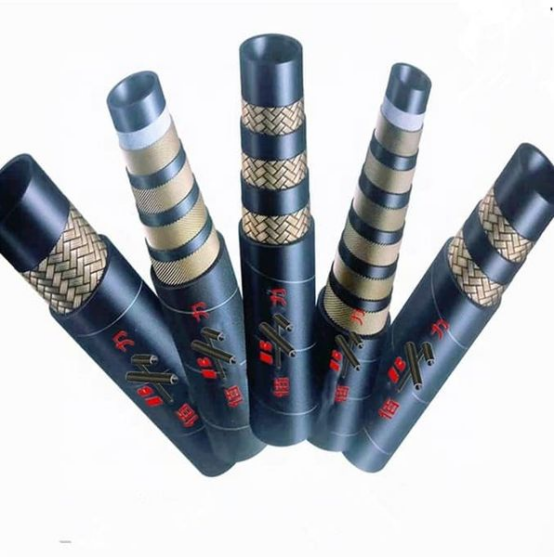Sen . 22, 2023 11:55 Siyahıya qayıt
Selecting the Right Hydraulic Hoses: Ensuring Optimal Equipment Performance
Understanding Hydraulic Hoses:
Hydraulic hoses are typically made of several layers, each serving a specific purpose. The innermost layer, known as the tube, is responsible for withstanding the hydraulic fluid's pressure and protecting against corrosion. The reinforcement layer provides strength and durability, usually made of synthetic fibers or steel wires. Finally, the outer cover ensures protection against abrasion, environmental factors, and chemical resistance.

Factors to Consider:
- Pressure Rating: The operating pressure within the hydraulic system is the primary determinant for selecting the appropriate hydraulic hose. It is crucial to choose hoses that are capable of withstanding the system's maximum pressure to avoid bursting or leakage. Always verify that the hose's pressure rating exceeds the maximum working pressure of the hydraulic system to ensure safety and reliability.
- Temperature Range: Hydraulic systems operate within a wide range of temperatures, and it is vital to select hoses that can withstand these extremes. Hoses must be capable of withstanding both high and low temperatures without deterioration, as temperature fluctuations can adversely affect the hose's performance and service life.
- Compatibility with Fluids: Hydraulic systems use various types of fluid, such as oil, water-glycol, or synthetic fluids. It is essential to ensure that the selected hydraulic hose is compatible with the fluid being used to prevent chemical reactions or degradation that could lead to system failure. Manufacturers provide compatibility charts to help identify suitable hose options based on the fluid being used.
- Flexibility and Bend Radius: The flexibility and bend radius of a hydraulic hose determine its ability to transmit fluid efficiently without constriction or excessive stress. Choosing hoses with the appropriate flexibility and bend radius ensures smooth operation and reduces the risk of premature hose failure. When selecting hydraulic hoses, consider the space limitations and operating conditions to determine the required flexibility and bend radius.
- Hose Length: Determining the required hose length is essential to prevent excessive strain or tension within the hydraulic system. Measure the distance between the connection points, considering any potential movement or flexing that may occur during operation. Using hoses that are too short may restrict movement or put additional stress on the fittings, while hoses that are too long can get tangled, resulting in potential hazards.
Conclusion:
Selecting the right hydraulic hoses is a crucial step in maintaining optimal equipment performance, minimizing downtime, and ensuring worker safety. By considering factors such as pressure rating, temperature range, fluid compatibility, flexibility, bend radius, and hose length, you can make an informed decision when choosing the ideal hydraulic hose for your specific application. Remember to regularly inspect and maintain the hoses to extend their service life and avoid unexpected failures. Prioritizing the selection of high-quality hoses will contribute to the efficiency, reliability, and longevity of your hydraulic systems.
-
Thermoplastic Hose Chemical Resistance Fluid Compatibility
XəbərlərJul.14,2025
-
Steel Wire Braid Hydraulic Hose Factory Production Process
XəbərlərJul.14,2025
-
SAE Hydraulic Hose Specs Textile Reinforcement Layer Structure
XəbərlərJul.14,2025
-
High Pressure Hydraulic Hose Factory CNC Bending Process
XəbərlərJul.14,2025
-
China Wire Spiral Hydraulic Hose High Temperature Resistance
XəbərlərJul.14,2025
-
Automotive Air Conditioning Hose Ozone Resistance Testing
XəbərlərJul.14,2025
